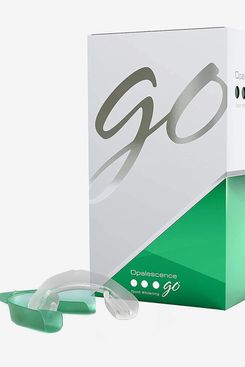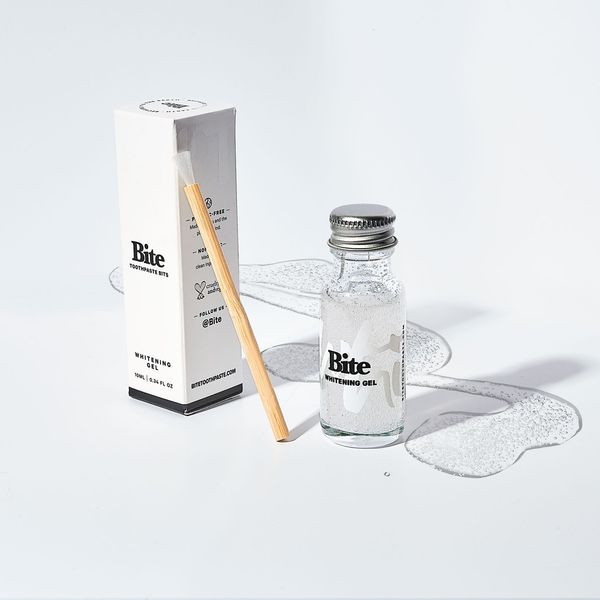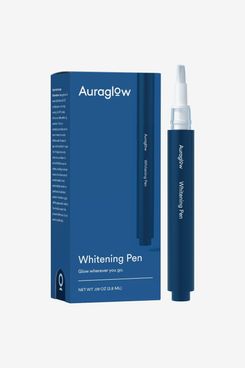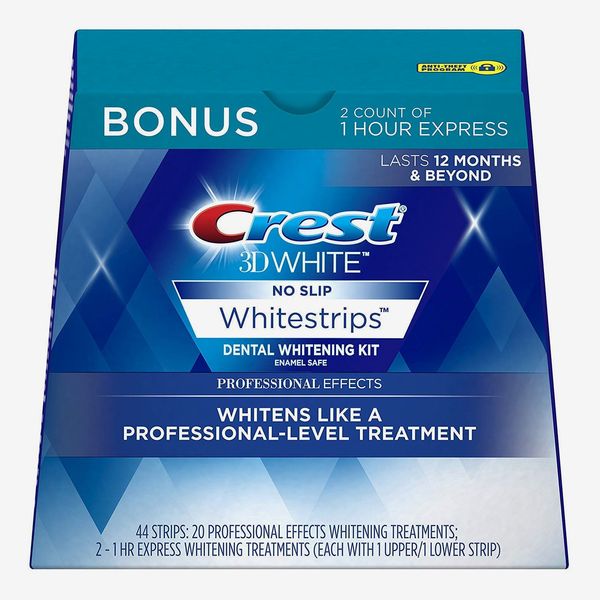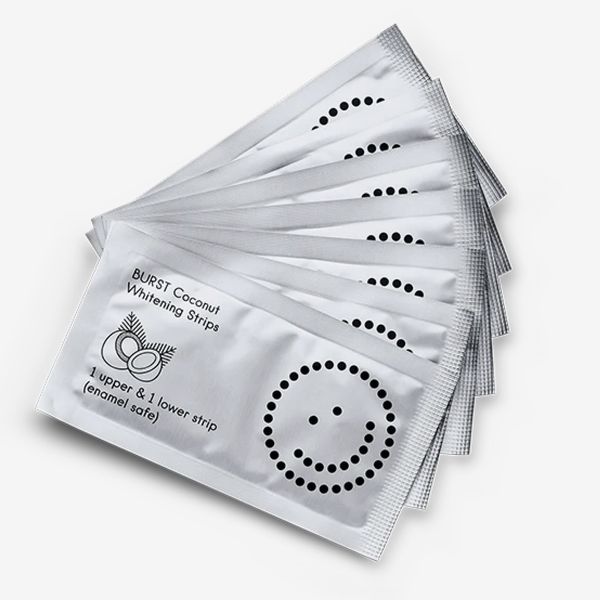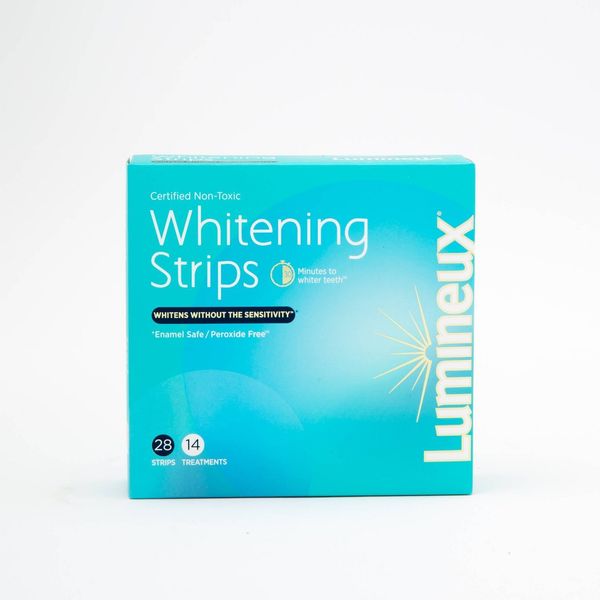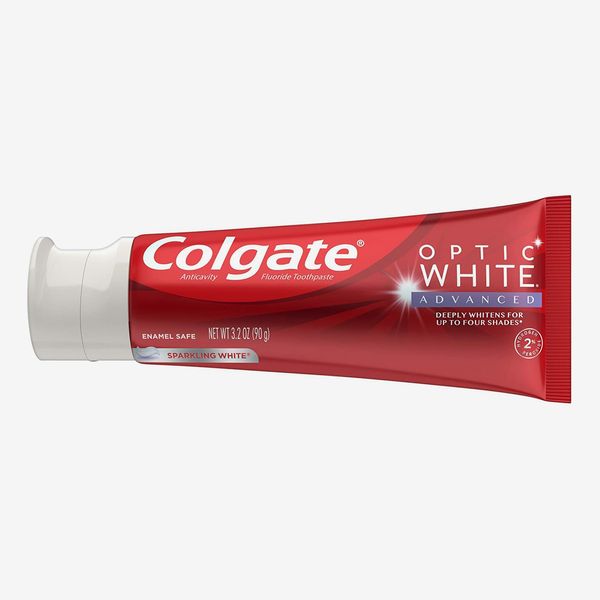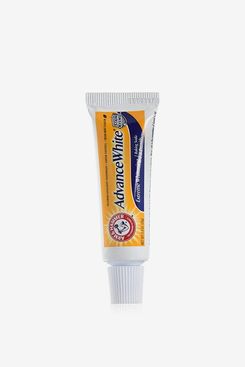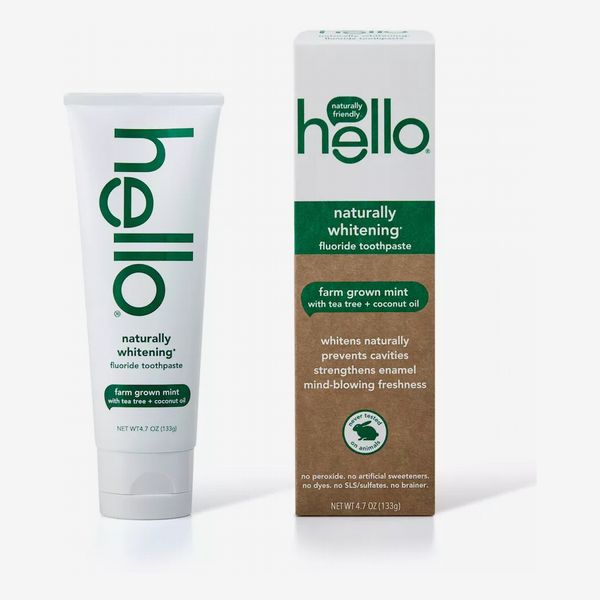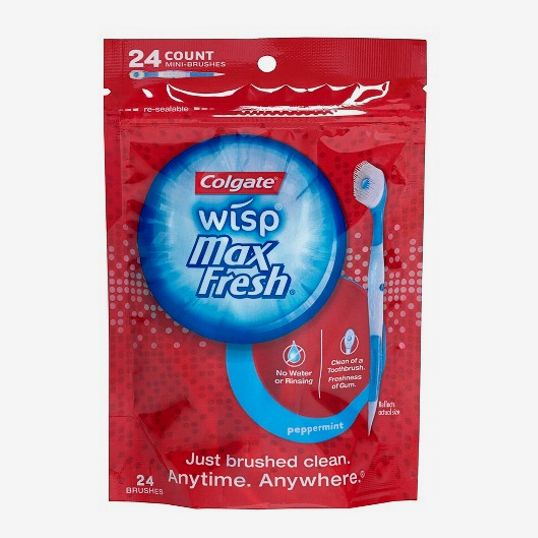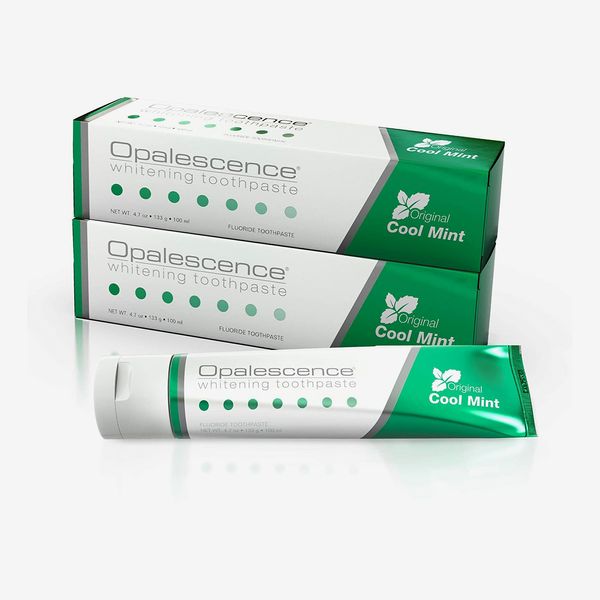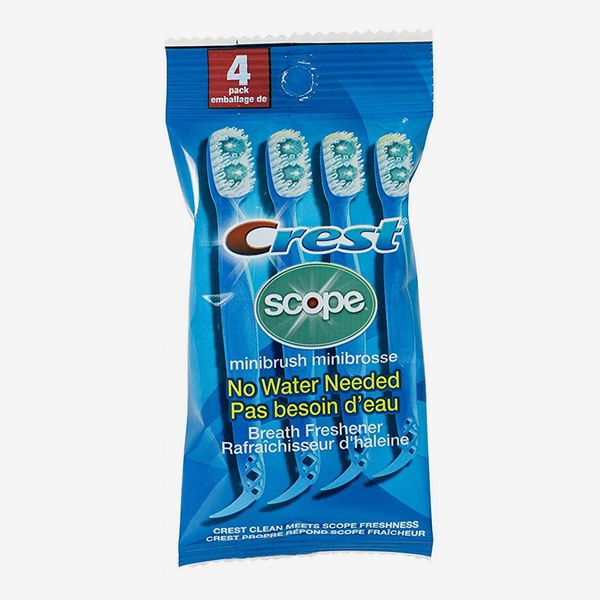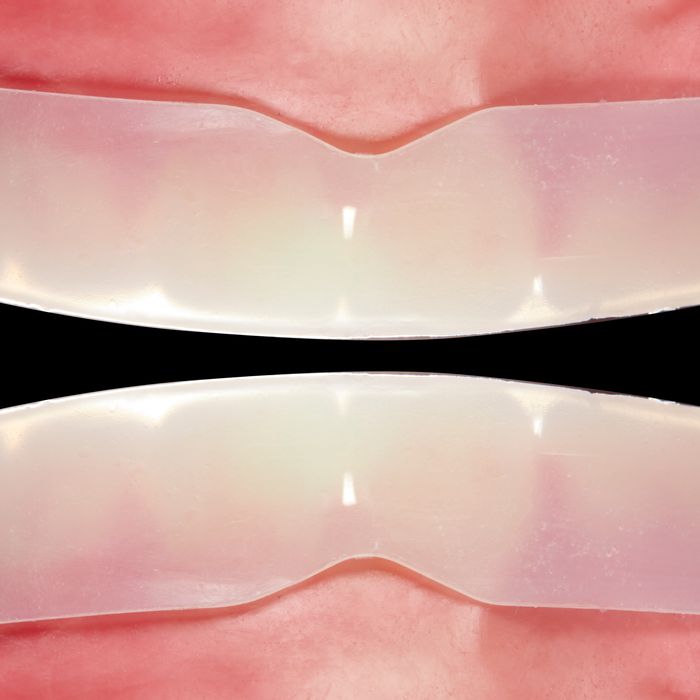
In this article
As the Strategist’s dental-hygiene expert, I’m constantly trying the latest oral-health products, from toothpaste to tongue scrapers. Teeth-whitening treatments are relatively new to my own routine, and I’ve noticed that with consistent use, they help me keep that just-left-the-dentist-clean look (especially a month or two after a cleaning). If you’re considering dipping into at-home teeth whiteners, the first thing to do is figure out what kinds of stains you’re dealing with. In some cases, deep stains can’t be removed through whitening. But at-home teeth whiteners can make a real difference against common culprits like staining caused by coffee, tea, red wine, soy sauce, or anything else that can stain a white T-shirt. And generally, if you’re getting in-office cleanings twice a year and the occasional whitening treatment, at-home whiteners can be very helpful for maintaining your pearly whites.
Next, you’ll want to consider what method you’ll be most consistent with, from simply switching to a whitening toothpaste to using more time-consuming gel trays and strips. To find the best teeth whiteners out there, I spoke to nine dentists about the proper active ingredients and what to avoid (more on that below) and asked which teeth whiteners they would recommend to their patients. Then, I started to try some of the teeth whiteners myself. As of right now, I’ve mainly tested for ease of use, but I’ll be sure to update this article once I’ve had more time to use each product. Read on for what dentists told me are the most effective ingredients to look for, or use the table of contents to skip right ahead to the type of teeth whitener you’re interested in. And, if you’re looking for more oral-health recommendations, we’ve got you covered on the best electric toothbrushes and water flossers too.
What we’re looking for
Active ingredient
According to the American Dental Association (ADA) and the nine dentists we spoke to, either hydrogen peroxide or carbamide peroxide is what you should look for in whitening products. “If it doesn’t have that ingredient, it’s not going to be whitening your teeth,” says Dr. Ben Winters, a.k.a “the Bentist.” The ADA website says, “The bleaching action in chemically induced whitening is due primarily to the effects of carbamide peroxide, which releases about one-third of its content as hydrogen peroxide, a strong oxidizing agent.”
Obviously there are other whitening agents and alternative ingredients out there, but experts say it’s best to avoid trendy, gimmicky products like whitening lights or charcoal, which might actually end up causing harm. “Charcoal is like brushing with sandpaper — it will take off the stain, but in the long term, your teeth get yellower over time because you’re removing an enamel layer,” Winters says. Hydrogen and carbamide peroxides are the gold standard of at-home teeth whitening, which is why we’ve only recommended chemical whiteners that use those ingredients below.
Method
While looking for peroxide is a good start, it can come in many different forms. You’ve got whitening gels, strips, toothpastes, and more to choose from. The ADA has only given its seal of acceptance to toothpastes and whitening strips, but Dr. Chris Salierno, chief dental officer at Tend, told me in an email that hydrogen peroxide or carbamide peroxide are “most effective in a gel form that is held against your teeth (think whitening strips, gel in trays, etc.).” Each method will have a different percentage of the active ingredient in it. There’s typically a higher percentage of hydrogen peroxide in a whitening gel or strip than there will be in toothpaste, but the best option for you will be something that fits with your lifestyle.
Ease of use
Which brings me to ease of use. You won’t see results with any of the below products unless you use them with some consistency and as instructed. If you don’t think you’ll take the time to add an extra step into your oral-hygiene routine — like wearing whitening strips for about 30 minutes daily for two weeks straight — maybe the better option for you is to just replace something already in your routine, like your toothpaste, with a whitening version. Whitening products in general can be messy, which can also be a deterrent. Having to fill trays with gel or dealing with strips that slip off can be frustrating, so below we’ve only included extra-grippy strips and foolproof methods of at-home whitening.
Best teeth-whitening kit overall
Active ingredient: 15 percent hydrogen peroxide | Method: Gel trays | Ease of use: Easy
Gels are one of the most effective forms of at-home whitening. It’s a similar experience to an in-office or prescription-strength whitening session, which typically involves a high percentage of hydrogen peroxide and a custom-fit bleaching tray. In those cases, you’re usually given a syringe of whitening gel that you can pump into the tray, but this Opalescence Go kit has trays that are pre-loaded with gel to streamline the process even more. When I tested the trays for myself, the process was mess-free and fast. The trays aren’t custom fit, but they’re labeled U for upper and L for lower. I placed them in my mouth, bit down for a couple of seconds, and took off the green outer trays. The application itself took about a minute, if that, and I could carry on doing stuff around my apartment while I waited for the recommended 15 minutes to pass. Afterward, I simply brushed my teeth to remove any leftover gel.
The trays can be used for up to an hour and come with varying concentrations of hydrogen peroxide — 10 percent, 15 percent, 20 percent, and 35 percent — which you can purchase based on your desired results and tooth sensitivity. As for how effective they are, cosmetic dentist Dr. Edward A. Alvarez and Winters both recommend this kit to their patients as a more affordable alternative to custom bleaching trays. One thing to note: Unlike custom-made bleaching trays that you can use indefinitely, Opalescence Go trays are disposable, so you’ll have to buy a new kit once you run out of trays. If you already wear a retainer, though, Winter suggests using it to create a DIY whitening tray every now and then by using just the Opalescence syringe-gel refills: “Put a little stream of whitening gel into the retainer and wear it at night.”
Best brush-on teeth-whitening gel
Active ingredient: 36 percent carbamide peroxide | Method: Gel | Ease of use: Messy
Bite’s whitening gel cuts out the need for the tray, as you can brush the gel directly on to your teeth. Compared to the Opalescence Go Kit, this one is a little messier and labor-intensive to use. I followed the instructions by drying my teeth with a washcloth, dipping the tiny brush into the gel, and painting each tooth. (A small amount of the gel dripped onto my bathroom counter in the process, but it wasn’t a significant amount.) Once the gel was applied, I set a timer on my phone, held a smile for two minutes while the gel bubbled up on my teeth, and spit out the excess formula. The entire process took about five minutes, but I was hovering over my sink the entire time. Per the instructions, I also didn’t eat or drink anything for half an hour after the application. This option, while somewhat messy, is plastic-free and offers a similar-strength formula to the Opalescence Go kit. It contains 36 percent carbamide peroxide, which is the equivalent of approximately 12.6 percent hydrogen peroxide. It has aloe vera in it, too, which Dr. Sharon Huang, the founder of Les Belles NYC, says is soothing to teeth.
Best teeth-whitening pen
Active ingredient: 35 percent carbamide peroxide | Method: Gel pen | Ease of use: Easy
If you want a paint-it-on option that’s a bit easier to manage than Bite’s kit, a whitening pen might be your best bet. Auraglow’s whitening gel dispenses with the click of a button on the bottom of the pen, so you don’t have to dip a brush repeatedly. The rest of the process is similar to Bite’s application: You apply a thin layer of gel to your teeth and hold a wide smile for one minute. The time difference compared to Bite’s two-minute recommendation was much less strenuous for me. There also weren’t any instructions to refrain from food and drink for 30 minutes afterward. It contains 35 percent carbamide peroxide — just one percent less than Bite’s formula — which is enough to be effective in between in-office whitening treatments, says Dr. Richard Lipari of NY Great Smiles. Note, though, that this method isn’t plastic-free and the formula doesn’t contain aloe vera like Bite’s does.
Best teeth-whitening strips
Active ingredient: Hydrogen Peroxide | Method: Strips | Ease of use: Easy
Crest’s 3D Whitening Strips are probably the most recognizable teeth whitening method on this list, and with good reason. The brand stands out as the No. 1 recommendation in this category, with dentists telling me their patients get good results within a week or two of using the strips every day. Plus, unlike the other methods mentioned so far, they have the ADA seal of acceptance, meaning they’ve been evaluated for their safety and efficacy. Crest uses hydrogen peroxide as the whitening agent in its strips, but according to a public-relations representative for the brand, it does not disclose ingredient percentages, which is proprietary information. However, a 2004 study did indicate that the Crest Professional Whitestrips have a 6.5 percent level of hydrogen peroxide.
I found the strips slightly easier to use than the trays and the brush-on options above, since I simply had to peel them off of the plastic backing, press them onto my teeth, and wait the recommended 30 minutes. They do take longer than the other methods, but I was able to carry on with my workday without any issues. And while whitening strips sometimes get a bad rap for not being super-adhesive, I found that these gripped my teeth and didn’t slide around. I also appreciated that they were thin enough for me to talk while wearing them, unlike Opalescence’s somewhat bulky trays.
Best (less expensive) teeth-whitening strips
Active ingredient: 6 percent hydrogen peroxide and coconut oil | Method: Strips | Ease of use: Easy
Burst’s whitening strips have about the same amount of hydrogen peroxide as Crest’s are estimated to have (6 percent) and are slightly less expensive. The strips also contain coconut oil, which brightens teeth naturally and has anti-bacterial and anti-fungal properties, according to Huang, as well as vitamins A, D, E, and K. Huang notes she hasn’t seen sensitivity with this product in her patients. I haven’t yet had a chance to try these for myself, but they’re meant to be worn for 15 minutes a day (half the time as Crest’s strips) for two weeks to see results.
Best all-natural teeth-whitening strips
Active ingredient: Coconut oil | Method: Strips | Ease of use: Easy
If you want a completely chemical-free whitening experience, Lumineux’s whitening strips use coconut oil as its active ingredient instead of hydrogen peroxide or carbamide peroxide. These strips also come recommended by Huang, who notes that they shouldn’t cause any irritation for the most sensitive teeth. The brand recommends wearing the strips for 30 minutes daily (similar to Crest’s strips) for seven days consecutively for best results.
Best teeth-whitening toothpaste
Active ingredient: 2 percent hydrogen peroxide | Method: Toothpaste | Ease of use: Easy
Switching to a whitening toothpaste is by far the easiest method on this list. The downside is that whitening toothpastes contain lower percentages of hydrogen peroxide, if they contain any at all, so you might not see results when used alone. That’s why Dr. Mandy Kouroshnia of New York’s Cityzen Dental typically recommends using one in conjunction with other whitening solutions. Alvarez recommends this Colgate toothpaste in particular because it’s one of the few that actually uses a chemical whitener — it contains 2 percent hydrogen peroxide — where others rely on physical tooth polishers like silica or calcium carbonate, which can dull the surface of the enamel over time. Though it has a smaller concentration of hydrogen peroxide than other tooth whiteners on this list, it will still work to actually whiten or bleach your tooth enamel, resulting in a true color change. Dr. Elisa Mello of NYC Smile notes that it’s best used once a week instead of replacing regular toothpaste to avoid causing sensitivity.
Best teeth-whitening toothpaste for sensitive teeth
Active ingredient: Hydrogen peroxide | Method: Toothpaste | Ease of use: Easy
If you’re looking for a whitening toothpaste you can use daily without as much risk of causing sensitivity, Mello recommends Arm & Hammer’s Advance White Toothpaste. It ranks much lower than the Colgate Optic White toothpaste on the toothpaste-abrasiveness scale, which can help more in the long run with both teeth sensitivity and the likelihood of future staining. “The problem with whitening toothpastes is that they’re very abrasive, and while being abrasive can remove superficial stains on the surface of your teeth, it also can remove enamel or scratch your teeth,” says Mello. “In the short term, you’re seeing a great result, but in the long term, you may have a scratch on the surface that’s easier to stain, and that’s a problem.”
Best natural teeth-whitening toothpaste
Active ingredient: Coconut oil | Method: Toothpaste | Ease of use: Easy
If you’re looking for a whitening toothpaste with very few additives (like foaming agents, sweeteners, or artificial colors), Hello is an excellent alternative. It’s our top pick for natural toothpastes and recommended by two dentists, Dr. Inna Chern of New York General Dentistry and Dr. Jonathan B. Levine of JBL NYC. As an alternative to hydrogen peroxide or other chemicals, this toothpaste contains coconut oil as a natural whitener. And while it is a more natural product, it’s made with fluoride, so it’s ADA approved.
Some more teeth whitening products we like
Our experts
• Dr. Edward A. Alvarez, NYC cosmetic dentist
• Dr. Ben El Chami, co-founder and chief dental officer at Dntl Bar
• Dr. Inna Chern, dentist at New York General Dentistry
• Dr. Sharon Huang, founder of Les Belles NYC
• Dr. Marie Jackson, founder of Stellar Smile Center
• Dr. Mandy Kouroshnia, founder of Cityzen Dental
• Dr. Richard Lipari, founder of NY Great Smiles
• Dr. Jonathan B. Levine, dentist and founder of JBL NYC
• Dr. Elisa Mello, co-founder of NYC Smile Design
• Dr. Chris Salierno, chief dental officer at Tend
• Dr. Ben Winters, the Bentist and orthodontist at Wincrest Orthodontics
The Strategist is designed to surface the most useful, expert recommendations for things to buy across the vast e-commerce landscape. Some of our latest conquests include the best women’s jeans, rolling luggage, pillows for side sleepers, ultra-flattering pants, and bath towels. We update links when possible, but note that deals can expire and all prices are subject to change.
Every editorial product is independently selected. If you buy something through our links, New York may earn an affiliate commission.

